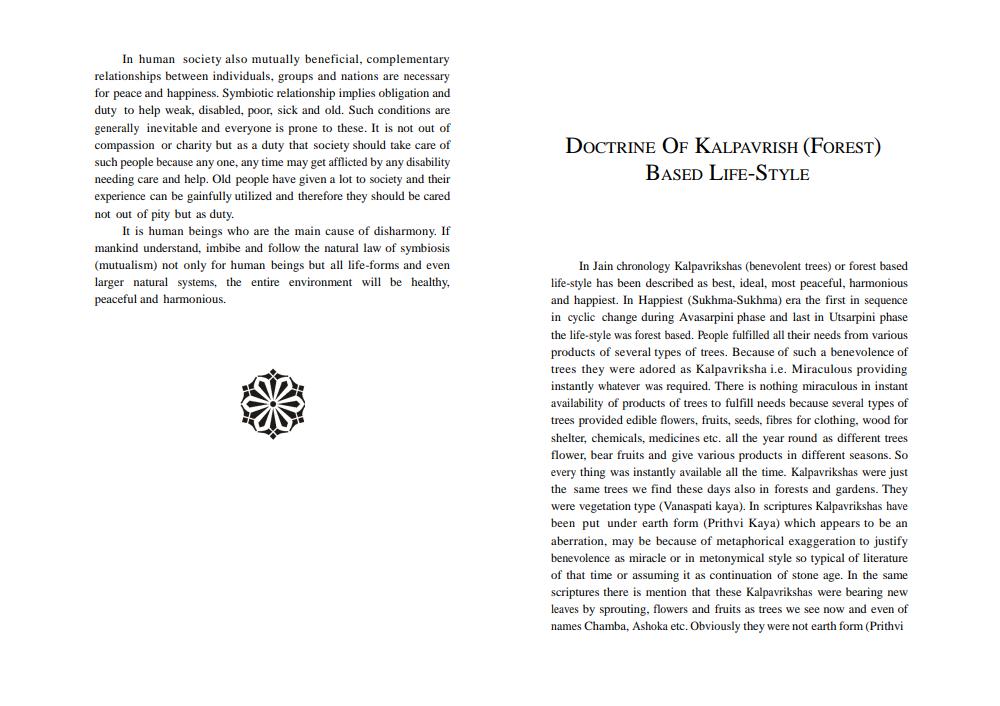________________
In human society also mutually beneficial, complementary relationships between individuals, groups and nations are necessary for peace and happiness. Symbiotic relationship implies obligation and duty to help weak, disabled, poor, sick and old. Such conditions are generally inevitable and everyone is prone to these. It is not out of compassion or charity but as a duty that society should take care of such people because any one, any time may get afflicted by any disability needing care and help. Old people have given a lot to society and their experience can be gainfully utilized and therefore they should be cared not out of pity but as duty.
It is human beings who are the main cause of disharmony. If mankind understand, imbibe and follow the natural law of symbiosis (mutualism) not only for human beings but all life-forms and even larger natural systems, the entire environment will be healthy, peaceful and harmonious.
DOCTRINE OF KALPAVRISH (FOREST)
BASED LIFE STYLE
In Jain chronology Kalpavrikshas (benevolent trees) or forest based life-style has been described as best, ideal, most peaceful, harmonious and happiest. In Happiest (Sukhma-Sukhma) era the first in sequence in cyclic change during Avasarpini phase and last in Utsarpini phase the life-style was forest based. People fulfilled all their needs from various products of several types of trees. Because of such a benevolence of trees they were adored as Kalpavriksha i.e. Miraculous providing instantly whatever was required. There is nothing miraculous in instant availability of products of trees to fulfill needs because several types of trees provided edible flowers, fruits, seeds, fibres for clothing, wood for shelter, chemicals, medicines etc. all the year round as different trees flower, bear fruits and give various products in different seasons. So every thing was instantly available all the time. Kalpavrikshas were just the same trees we find these days also in forests and gardens. They were vegetation type (Vanaspati kaya). In scriptures Kalpavrikshas have been put under earth form (Prithvi Kaya) which appears to be an aberration, may be because of metaphorical exaggeration to justify benevolence as miracle or in metonymical style so typical of literature of that time or assuming it as continuation of stone age. In the same scriptures there is mention that these Kalpavrikshas were bearing new leaves by sprouting, flowers and fruits as trees we see now and even of names Chamba, Ashoka etc. Obviously they were not earth form (Prithvi




